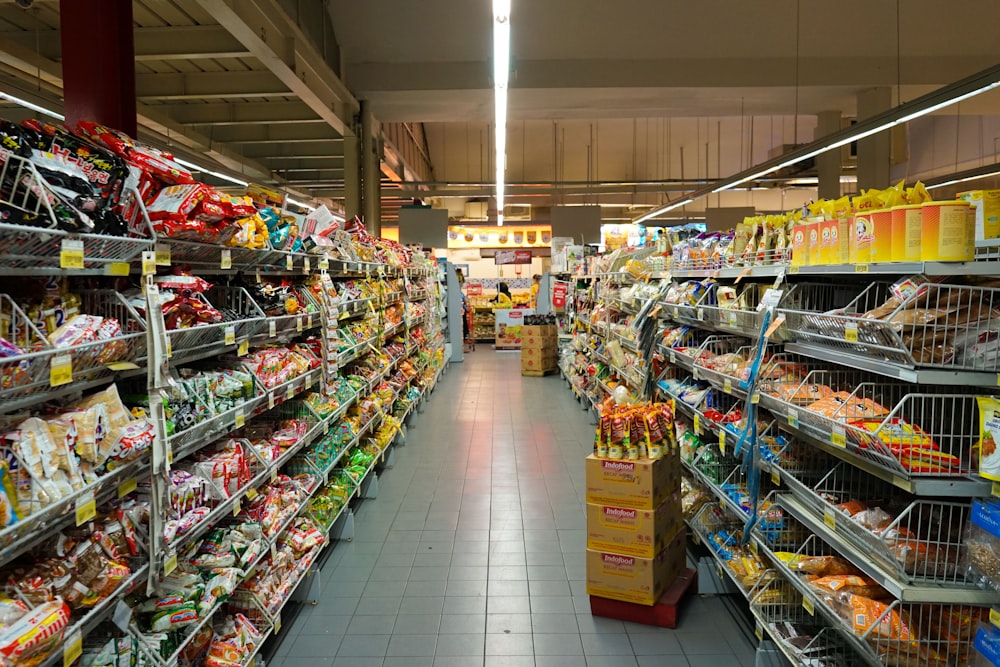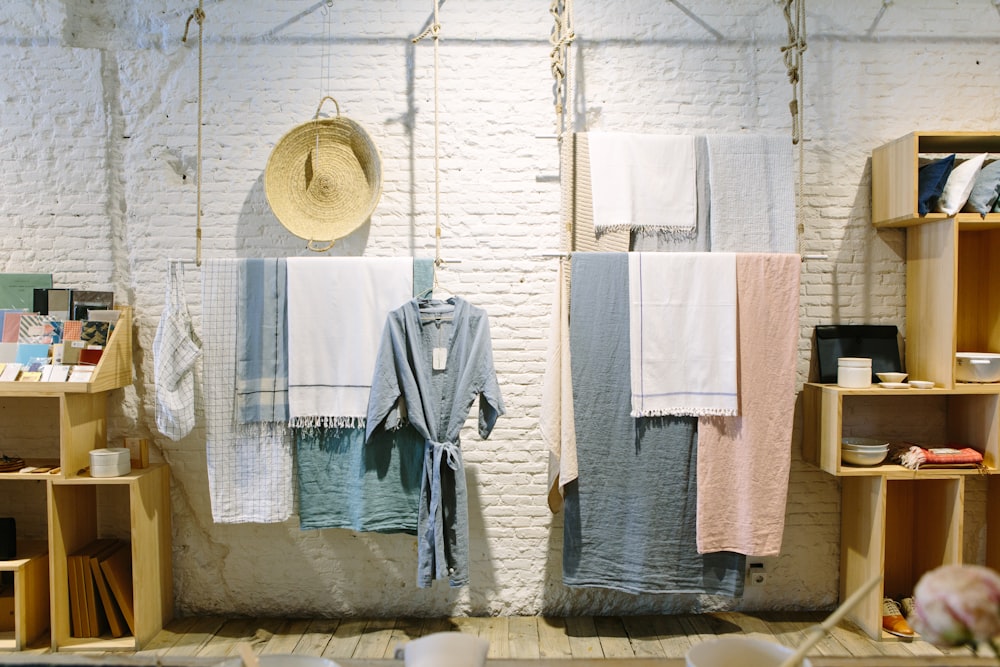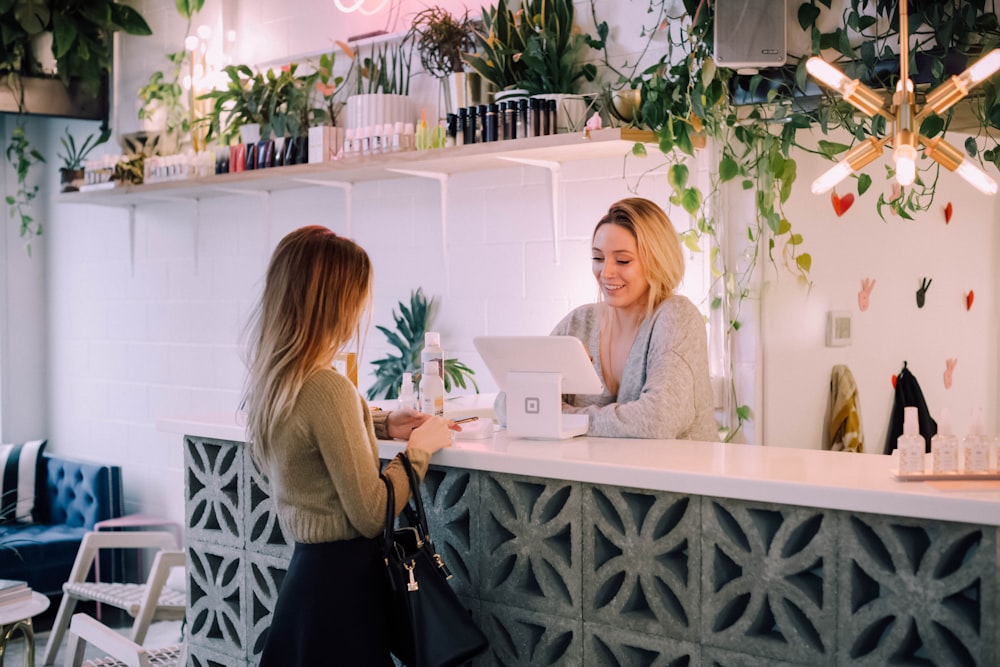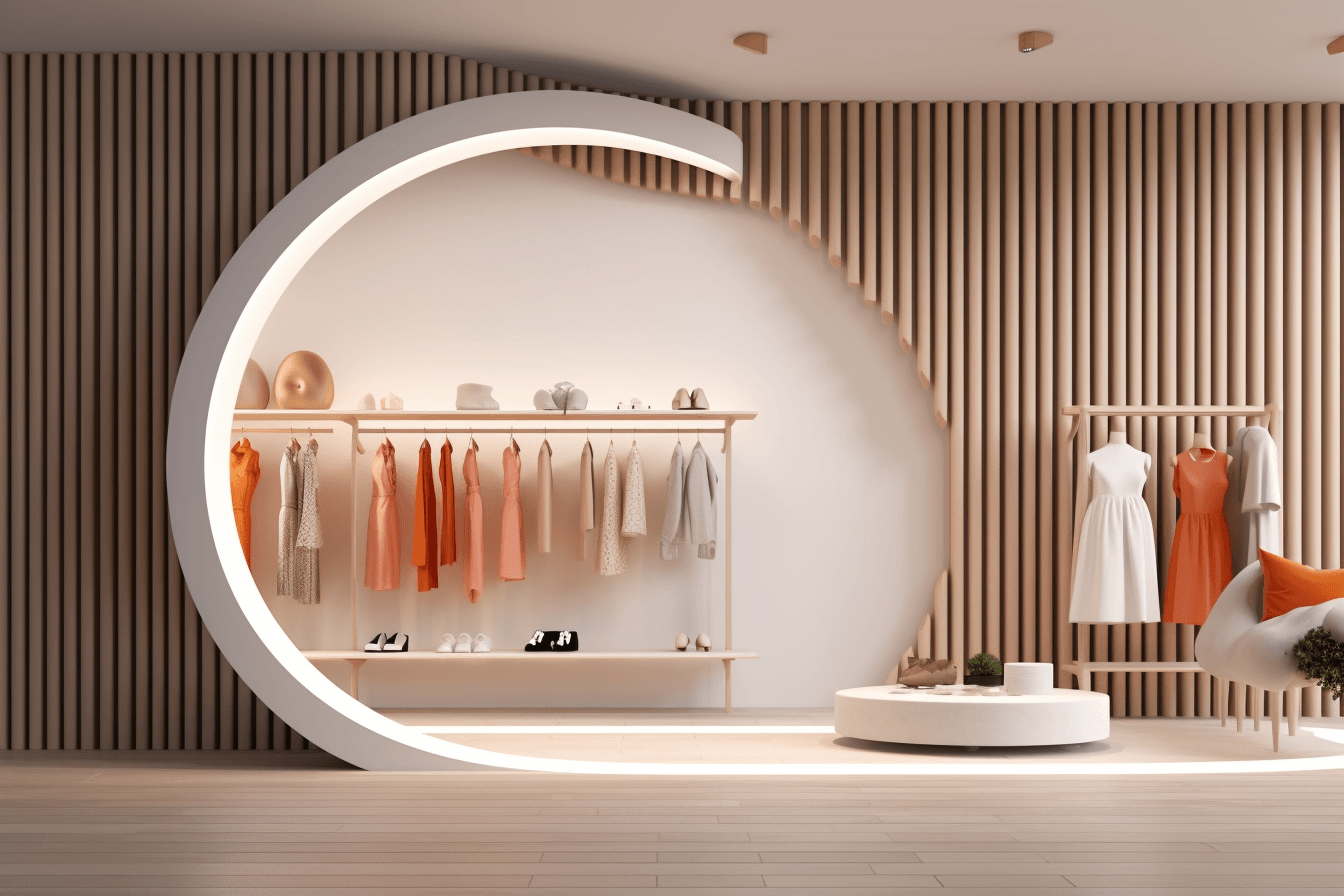
Retail store design is a key factor in the success of any retail business. From maximizing layout efficiency to leveraging technology, there are many ways for retailers to ensure their stores meet customer needs and expectations. This post will look at how store design can be used to influence buying choices, as well as tactics like visual merchandising that make for a captivating shopping journey. Read on to learn more about the potential of retail store design.

Table of Contents:
- Maximizing Store Layout Efficiency
- Optimizing Store Design for Purchasing Decisions
- Utilizing Visual Merchandising Strategies
- Creating an Engaging Shopping Experience
- Leveraging Technology in Retail Store Design
- FAQs in Relation to Retail Store Design
- Conclusion
Maximizing Store Layout Efficiency
Store layout is an important part of retail success. It can influence the customer experience and help create a more efficient shopping environment. With careful planning, retailers can maximize their store layout efficiency to optimize customer satisfaction and drive sales.
Maximizing Visibility
When it comes to optimizing store layouts, one key factor is visibility. Retailers should consider how customers will be able to view products from different angles and distances within the store space. This could involve using shelves or racks that are easily visible when entering the store or strategically placing product displays in high-traffic areas such as near checkout counters or entrances/exits.
Guiding Customers with Pathways and Power Walls
Retailers should contemplate the manner in which they wish to guide customers as they traverse their shop while shopping. To do this, they should consider creating pathways that guide shoppers throughout the space without making them feel confined or overwhelmed by too many choices at once. Additionally, retailers may want to take advantage of “power walls” which are large sections of wall dedicated solely for displaying merchandise in a visually appealing way that encourages browsing and purchases alike.
The Role of Lighting in Retail Store Design
It’s also essential for retailers to pay attention to lighting when designing their stores’ layouts; appropriate lighting can make all the difference between an inviting atmosphere versus one that feels uninviting or unwelcoming due its dimness or lack thereof altogether. The use of natural light sources (such as windows) combined with task lighting (i.e., spotlights) on specific areas can draw attention towards certain products while providing overall illumination throughout the entire space – resulting in a much more enjoyable shopping experience overall.
Aisle Widths and Shelf Heights
Finally, it’s important for retailers to not only think about what products they want customers to see but also where those products should go in order to maximize efficiency during restocking processes down the line. This means considering aisle widths, shelf heights and depths etc., so staff members have easy access when replenishing inventory levels later on – thus ensuring customer satisfaction remains consistently high even after peak periods have passed. All these considerations taken together will enable retailers to achieve maximum efficiency out of their store layouts while keeping up with ever-changing consumer needs and demands over time too, giving them an edge against competitors who don’t take such measures into account properly enough.
Maximizing store layout efficiency is key to ensuring a successful retail business. By optimizing store design for purchasing decisions, retailers can further increase their profits and customer satisfaction.
Optimizing Store Design for Purchasing Decisions
The aim in retail store design is to build an atmosphere that induces customers to buy. Retailers must consider various aspects, like the arrangement of space, illumination, hues and indications when aiming to form an atmosphere that motivates shoppers to buy. By optimizing these elements for maximum impact, retailers can increase sales and improve customer satisfaction.
Layout:
A well-thought-out store layout can be key in influencing purchasing decisions. When designing a store’s layout, consider how shoppers move through the space and what items they are likely to notice first. For example, positioning popular products near the entrance or strategically placing them at eye level will draw attention and potentially lead to more sales. Additionally, creating clear pathways between departments will help keep shoppers engaged throughout their journey while also making it easier for staff members to assist customers when needed.
Lighting:
Lighting plays an important role in setting the tone of a retail space and drawing attention to certain products or displays. Natural light is ideal whenever possible but artificial lighting should also be used strategically with brighter lights focused on specific areas where you want customers’ eyes drawn (e.g., sale sections). In addition, dimmer lights can be used in other parts of the store like dressing rooms which may encourage people to linger longer if they feel comfortable doing so without being under bright lights all the time.
Lighting can be employed to emphasize certain products or regions of the store, thereby aiding in a successful visual merchandising strategy. When done correctly, strategic lighting can draw attention towards certain items while making others appear less prominent – this helps guide customers through their shopping journey by emphasizing featured products and helping them make purchasing decisions more quickly and confidently.
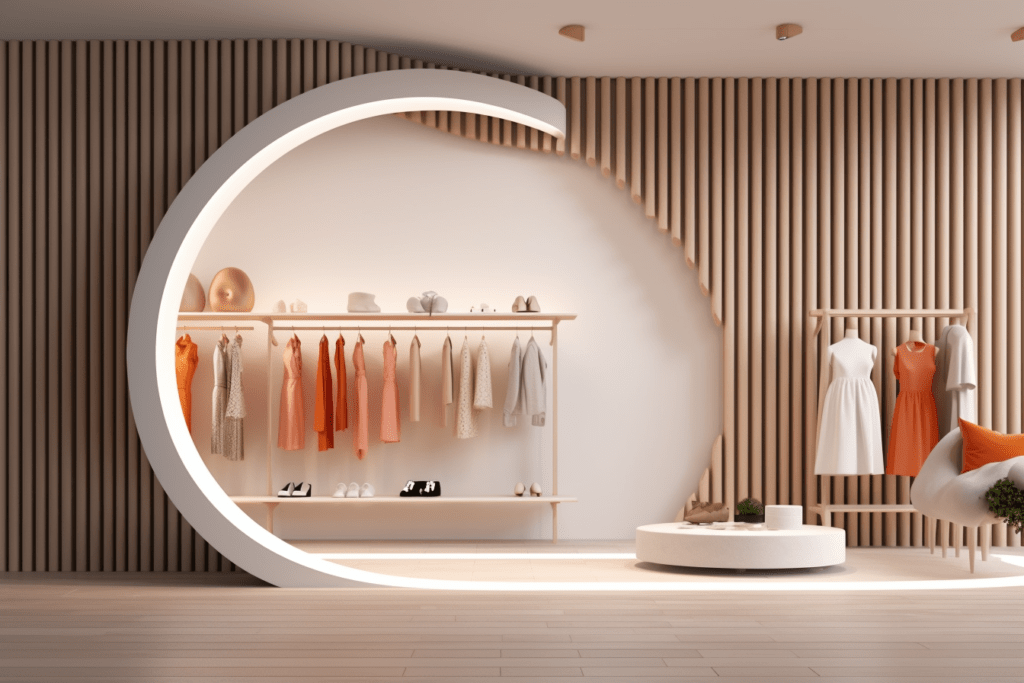
Colors:
Colors have been proven time and again to influence consumer behavior both consciously and subconsciously so it’s important for retailers not only choose colors wisely but use them effectively too. Bright colors tend work best as accents since they stand out from neutral tones; however darker shades can also be effective depending on what type of atmosphere you want your shop exude (elegant vs cozy etc.). Finally don’t forget about color psychology – understanding how different hues affect people emotionally – as this knowledge could prove invaluable when planning out displays or advertising campaigns down the line.
The use of color is another critical element when it comes to creating visually appealing displays – bright colors help attract attention while neutral tones provide contrast which makes product details stand out even more effectively. Color blocking techniques like grouping similar colored items together are great ways to create eye-catching visuals without overwhelming shoppers with too much information at once – allowing them time to take everything in before making their final decision on a purchase item(s).
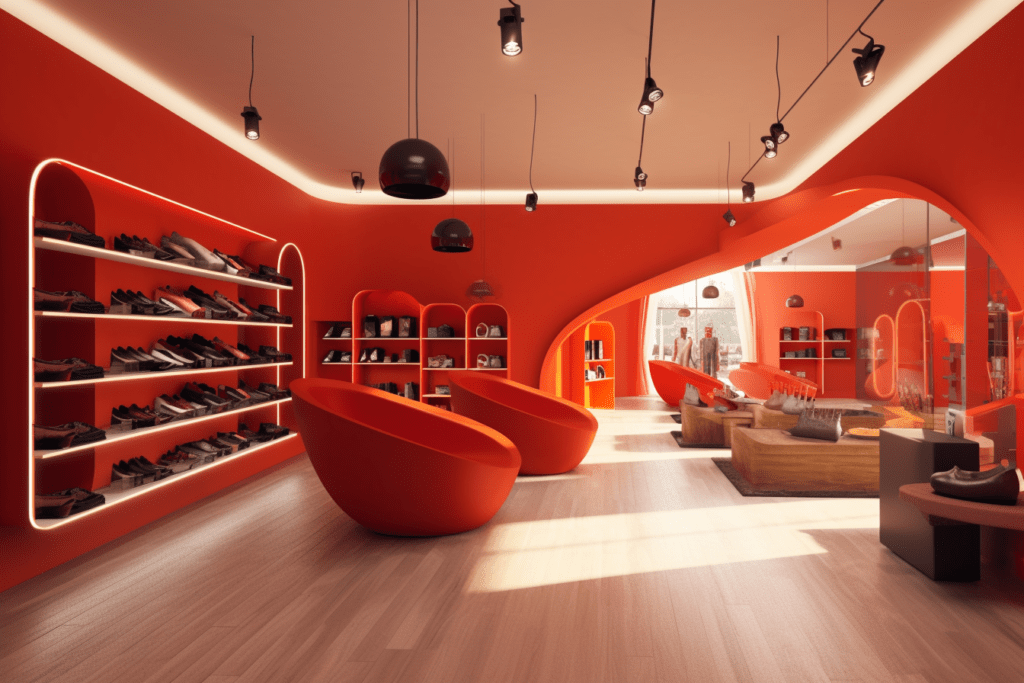
By implementing the right combination of store design elements, retailers can increase customer satisfaction and loyalty while optimizing purchasing decisions. Utilizing visual merchandising strategies is another key factor in ensuring that customers have a positive shopping experience.
Utilizing Visual Merchandising Strategies
Visual merchandising is a key factor in successful retail store design. It’s the practice of creating attractive displays that draw customers into stores and encourage them to purchase items. By using visual cues, retailers can create an engaging shopping experience that drives sales and increases customer satisfaction.
In devising successful visual merchandising plans, a few essential components must be taken into account. First, it’s important to determine what type of display will best showcase your products or services. When it comes to showcasing apparel, one might opt for dress-up displays such as mannequins rather than regular shelves. Organizing and labeling your products correctly is essential to help customers find what they’re in search of.
Finally, technology has become increasingly important when it comes to optimizing retail store design and can help visual merchandising. Digital signage solutions offer real-time updates on pricing and promotions, while interactive kiosks provide additional product information and support directly from staff members located elsewhere within the store environment or remotely. This helps reduce wait times while enhancing customer service levels, resulting in increased loyalty and overall satisfaction rates among shoppers who visit these types of establishments regularly.
Retailers can maximize sales by utilizing techniques of visual merchandising to craft an engaging experience for customers. To further enhance the customer’s journey through the store, creating a memorable and enjoyable atmosphere is absolutely vital.
Creating an Engaging Shopping Experience
Creating an engaging shopping experience is a key factor in retail success. Designing the store in an inviting way is essential for customers to interact effectively with its products and services. Here are some tips to help you create an inviting atmosphere for shoppers:
1. Use Color Psychology:
Colors can have a powerful effect on our emotions, so use them strategically when designing your store layout. Choose colors that evoke positive feelings like joy, optimism, and energy – such as yellow or orange – while avoiding darker shades that may make people feel uncomfortable or overwhelmed.
2. Make It Easy To Navigate:
A well-designed floor plan should be easy to navigate and provide clear pathways for customers to follow throughout the store. Consider adding signage with arrows pointing towards different departments or product categories to help guide shoppers along their journey.
3. Create Visual Interest:
Using displays, props, lighting fixtures, artwork and other decorative elements can add visual interest to your space and draw attention to certain areas of the store where you want customers’ eyes to focus on first (such as new arrivals). This helps create an inviting atmosphere that encourages exploration and discovery within the shop environment.
4 . Maximize Space Efficiency:
When it comes to maximizing space efficiency , look for ways to optimize storage capacity by making sure shelves are stocked efficiently , utilizing vertical wall space , investing in multi-functional furniture pieces , etc . Doing this will not only free up more room but also give shoppers a better view of all merchandise available .
5 . Approach Your Store as an Art Gallery:
Depending on your store layout, products, and clientele, you might want to set up shop with an experience similar to that of a curated art gallery. By displaying fewer items and putting more thought and care into product displays, shoppers will have an explorational experience and view your products with more value. This is especially effective if you have less inventory and higher-end products, to begin with.
6. Reveal Behind the Scenes:
Whether your brand focuses on a few key products or mass-produces a plethora of items, it’s a good idea to generously give insight to your customers by showing them how your products are made. This is especially a powerful method if your product boasts selling points like being made in the USA, organic, environmental-friendly, and so on. And this is a must-use strategy if your products are hand-crafted or hand-made. Not only will you earn the trust of your customers, but you will also pique their interest much, in the same way, as a documentary or reality show.
7. Invite Customers with Gorgeous Window Displays:
You might not judge a book by its cover, but you will certainly judge a store by its exterior window display. Beyond your store’s name, a potential customer’s first impression of your brand will be what they see from the outside. And if they can’t see anything, they might not be interested enough in entering your store by its name alone. This strategy requires tremendous creativity and artistic talent because you need to take into consideration design principles, product arrangement, and more. But the results are always worth it. An attention-grabbing window display is often enough to get random passersby into your store, with the possibility of being converted into paying customers.
8. Have Picture-Worthy Installations:
With everything being shared on social media nowadays, it’s free advertising to have a designated area or spot with visually interesting and brand-defining elements where your customers can take pictures. From selfies to group shots, your team should encourage this activity. If your store’s name and products are in the picture, it will help create more brand recognition, and that’s always a good thing.
9. Consider Music:
Having a custom playlist that functions as the soundtrack to your retail space and store will enhance the ambiance and mood of your customers. This requires the music selection to fit the theme and overall feel of your brand and retail store, so careful consideration is a must. You also don’t want customers being put off by offensive lyrics or controversial subject matter. But you want the music in your retail space to make a statement. Finally, make sure the volume of the music in the store is not too loud or too soft, because either extreme will render the music’s effect useless. But when done right, customers will enjoy spending time in your store and might even ask employees about the songs being played.
Leveraging Technology in Retail Store Design
Utilizing technology in retail stores can be beneficial for both businesses owners and consumers. For example, using interactive touchscreens allows customers to explore product information quickly without having to wait around for assistance from staff members. Additionally, implementing digital loyalty programs incentivizes customer loyalty while providing valuable data insights about customer behavior which can inform future decisions regarding marketing strategies or inventory stocking levels.
Crafting a captivating shopping experience is essential for any retail outlet to thrive. By leveraging technology in its design, retailers can create a more immersive and enjoyable customer journey that will keep customers coming back for more.
The utilization of tech is becoming increasingly crucial in the retail sector, with store design being no exception. Leveraging technology can help retailers create a more efficient and engaging shopping experience for customers. Here are some key ways to use tech to enhance your store layout:
1. Automated Checkout:
Implementing automated checkout systems such as self-checkouts or mobile payment options can significantly reduce wait times at the register and provide customers with a more seamless purchasing experience. This technology enables the gathering of consumer information, which can be employed to discern customer trends and adjust promotional approaches accordingly.
2. Digital Signage:
Digital signage can be used to create a visually stimulating atmosphere in the store, while informing customers about new products and sales events. Additionally, using interactive displays gives customers access to product information on demand so they don’t have to rely solely on staff members for assistance when making purchase decisions.
3. Augmented Reality:
Taking advantage of AR is a practical choice for numerous retailers, as it offers buyers the opportunity to “test before they purchase,” creating an interactive shopping experience that helps them make informed choices with assurance while diminishing returns. Moreover, utilizing AR also allows you to glean valuable insights into what items customers are interested in buying so you can tailor your inventory based on demand signals from consumers themselves.
4. Smart Shelving:
Smart shelving systems provide retailers with the capability to remotely monitor stock levels via embedded sensors within shelves, eliminating manual inventory counting and saving time and money. Additionally, smart shelves enable dynamic pricing capabilities which automatically adjust prices depending on demand, ensuring optimal pricing strategies across different locations and seasons. With this technology in place, resources can be freed up for other tasks instead of having employees constantly check stock levels throughout the day.
5. Using AI Chatbots:
Incorporating AI chatbots into your store design provides customers with instant answers 24/7 without needing human intervention – saving time & money while improving customer service satisfaction rates. Plus these bots are able collect feedback from shoppers regarding their experiences which could then be used towards optimizing future designs & layouts according its findings (ease of navigation / product selection process / overall atmosphere).
5. Add QR Codes:
Smartly place QR codes on specific products or shelf tags as ways for customers to instantly access additional information and possibly have their questions answered. You can also be creative and have QR codes launch other features such as chat rooms, videos, and games. Another way to entice customers to buy your products is to use QR codes to unlock coupons, discounts, newsletter signups, and social media platforms. And they don’t just have to be inside your store. They can also be located on the exterior or on signs to help convince customers to step into your store.
6. Maximize Your Online Presence:
This is the most vital component to a modern-day store’s success. You’ll need to be ever-present on social media, and you’ll need to choose the best platforms to work with your brand, store, and customer base. Having one social media account makes all the difference, but you’ll want to extend your presence to at least one or two more. Any more than that might become ineffective and more of a burden than anything else. You’ll need to be in touch with your audience demographic and engage them in the most fun, unique, and memorable ways. From your website to your social media profile, this is where the souls of your brand and store live.
Overall, leveraging technology in retail store design offers numerous benefits ranging from improved efficiency and accuracy through automation processes to increased engagement via interactive elements like augmented reality. This ultimately leads to higher customer satisfaction rates over time.
FAQs in Relation to Retail Store Design
What is the importance of store design in retail?
Creating an inviting atmosphere that entices customers to spend time browsing and buying products, as well as returning for future visits, is essential to retail success. Effective store design can help drive sales by providing an attractive atmosphere that encourages shoppers to linger longer and explore more merchandise options. Additionally, it helps create a positive customer experience which leads to increased loyalty and repeat business. Ultimately, well-designed stores are essential in creating successful shopping experiences for customers – leading directly to improved profitability for retailers.
What is the retail store design?
The retail store design should be tailored to the target audience and their needs. It should have an open layout that allows customers to easily navigate through the store, while also providing visual cues such as product displays or signage to draw attention. Additionally, a balance of colors and textures should be used in order to create a pleasant atmosphere for shoppers. Lastly, modern technology can be incorporated into the design by adding interactive kiosks or digital screens with engaging content about products or services being offered.
1. Grid Layout:
This layout is the most common type of store design and consists of straight aisles that intersect at right angles, forming a grid-like pattern. It allows customers to quickly find items and move through the store with ease. This layout is the most common, consisting of straight aisles and gondolas that form a grid pattern in the store. It allows for maximum visibility and ease of navigation for customers.
2. Loop Layout (Or Racetrack Layout):
Also known as a racetrack layout, this type of design features curved or circular pathways for customers to follow around the store in order to view all merchandise displays.
The racetrack layout follows a continuous path that circles around from one side to another, allowing shoppers to view multiple products at once while moving along its course quickly and efficiently without having to backtrack too much when searching for items they need or want from different parts of the store’s inventory list


A loop layout has two main entrances with displays placed around the perimeter of the store to create an oval or circular shape which encourages customers to browse throughout all areas before exiting through one entrance again.
Examples of retail stores that commonly use this layout include Target, IKEA, and Macy’s.
3. Free Flow Layout:
A free flow layout does not feature any designated paths for shoppers but instead encourages them to explore different sections without restriction or guidance from staff members or signs.
4. Zone Layout:
This format divides up retail spaces into distinct zones based on product categories, allowing customers to easily locate what they are looking for within each area while also creating an organized atmosphere throughout the entire space
5. Free-Flow Layout:
The free-flow design utilizes curved pathways between display units instead of traditional linear layouts, creating an open environment where customers can easily explore different sections without feeling confined by walls or barriers within the store space itself.
6. Angled/Diagonal Layouts:
This type features angled shelving and racks which helps draw attention towards certain product displays as well as creates more dynamic visual appeal than other designs due their irregular shapes.
7. Geometric/Island Layout:
This layout consists of separate sections or “islands” that are connected to one another with aisles, making it easier for customers to find specific items they may be looking for within the store as well as providing an interesting visual presentation when compared to other designs.
8. Forced-Path Layout:
When you want to strategically guide your customers down a pre-determined path, the forced-path layout is what you want to utilize. Shoppers will be exposed to all of your products as they make their way through your store, and they might purchase additional items they didn’t realize they need. Additionally, you can guide customers quickly to the most popular products while still showing them under-performing or lesser-known products. Keep in mind, this layout is slow and prevents shoppers from getting in-and-out quickly if that’s their preferred experience. Otherwise, it can be an incredibly effective layout strategy.
9. Straight/Spine Layout:
This popular floor plan is chosen because it’s easy and intuitive for customers to understand. As soon as a shopper enters the store, they can see everything straight ahead of them. For customers who value expediency, they’ll be able to see exactly what they want and go for it right away. This is especially true if products are displayed properly with care to organization and visual design. This is also a great choice for smaller retail shops or for store owners who want to get setup and started right away.
Conclusion
In the end, store design is a key factor in any business’ prosperity. By optimizing layouts for efficiency, creating engaging experiences with visual merchandising strategies and leveraging technology to improve customer experience – retailers can ensure their customers have a positive shopping journey that will lead them back again and again. Retailers should continue to stay informed on the latest trends in store design so they can create an environment that encourages shoppers to make purchases while also providing convenience and satisfaction.


